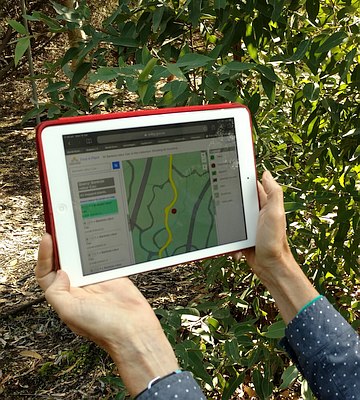The main aim of the Friends is to support the Gardens. We do this through both practical and financial means.
Financial support
Financial support is a very important part of the Friends’ work for the Gardens. Since the Friends formed in 1990 we have contributed around $2 million through projects and grants, and more projects are in the pipeline.
As well as membership fees, the Friends raise funds through activities such as Botanic Art and Photographic exhibitions, Growing Friends plant sales, and through tax-deductible donations.
We try to spread our financial support across as wide a range as possible of the Gardens’ roles and functions: horticulture, scientific research, aesthetic and visitor experience.
More about financial support for the Gardens, and our process to identify and assess potential projects for funding. See a map of Friends-funded projects (PDF, 541 KB).
Tax-deductible donations
The Friends seek donations to finance worthwhile projects within the Gardens; projects of the kind that could not be financed from the Gardens’ budget.
Since 2004 over $400,000 has been donated and directed towards projects in the Gardens. More about completed projects.
Tax deductions are available for donations over $2 made through the Friends' gift fund. You can easily donate online and pay by credit card, direct bank deposit or cheque as you prefer. Donors are issued with an official receipt which clearly shows that the donation is tax deductible.
Until January 2024, tax-deductible donations were required to be made through a special 'Public Fund' that was limited in how the funds could be spent. Deductible Gift Recipient status now applies to the Friends of the ANBG itself.
Practical support
Volunteering at the Gardens is very rewarding and great fun. For an overview of opportunities to get involved in Friends activities and the life of the Gardens, see Volunteering at the ANBG.
Visitor Information Centre
Volunteers from the Friends provide services in the Visitor Information Centre 9:30am—4:30pm each weekday. The volunteers meet and greet people as they arrive, and assist them to get the most out of their experience at the Gardens.
The Volunteer Visitor Information Program was introduced primarily to improve and expand the customer service provided to visitors to the Visitor Information Centre. It has developed into a most rewarding opportunity for a number of volunteers and is freeing up staff resources for other essential functions in the Gardens.
The Volunteer Programs are now being evaluated to lead to further improvements for the Gardens, the volunteers and, most of all, the visitors.
Guided walks
Guided walks through the Gardens help visitors to see and understand the beauty of Australia's native flora, and to appreciate the clever adaptations of Australian plants. Knowledgeable guides share stories about the fascinating array of Australian plants on display and the Gardens’ many achievements. More about guided walks.
Flora Explorer mini-bus tours
Flora Explorer, a 12-seater electric vehicle, was originally funded by the Friends and is operated by Volunteer Guides. It takes visitors on a 45-minute guided journey to discover the Gardens’ highlights. People of all ages – young and old – can easily experience more remote areas of the Gardens that they may never have seen before. More about Flora Explorer tours.


